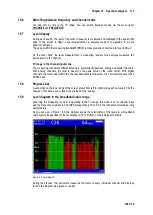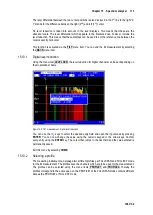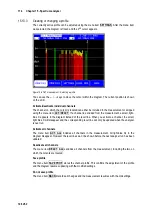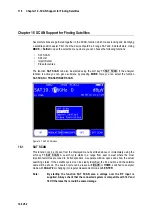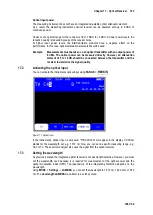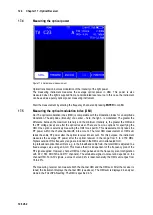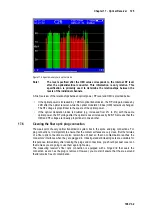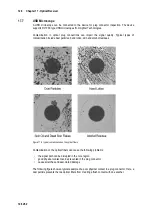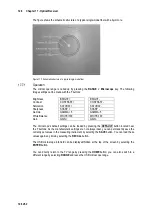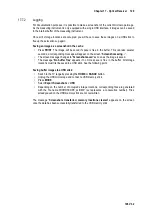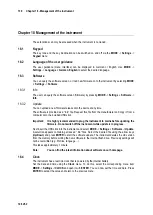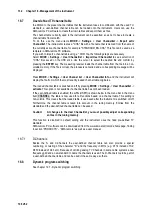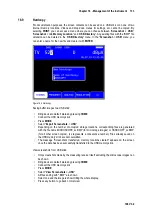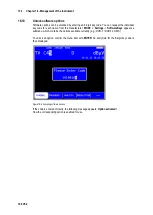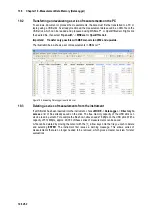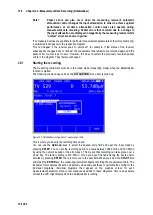
124 Chapter 17 - Optical Receiver
106 V3.2
17.4
Measuring the optical power
Figure 17-2 Optical power measurement
Optical transmission involves modulation of the intensity of the light power.
The measuring instrument measures the average optical power in dBm. This power is also
measured when the light is supplied from an unmodulated laser source. In this case, the instrument
can be used as a purely optical power measuring instrument.
Start the measurement by entering the frequency/channel and pressing
ENTER
to confirm.
17.5
Measuring the optical modulation index (OMI)
Der The optical modulation index (OMI) is comparable with the modulation index for an amplitude
modulation. The amplitude (intensity) of a carrier – here, the light – is modulated. The greater the
difference between the maximum intensity and the minimum intensity is, the greater the OMI and
the RF voltage (level) are after the optical receiver. There are now two options for specifying the
OMI. One option is selectively measuring the OMI for a specific. This measurement only takes the
RF power within the channel bandwidth into account. The total OMI measurement or OMI sum
takes the entire RF power after the optical receiver into account. For this purpose, the instrument
measures the average RF power after the optical receiver in the range from 5 to 2,150 MHz.
Signals outside of this frequency range are included in the OMI sum in attenuated form.
In professional optical transmitters e. g. in the broadband cable field, the total OMI is adjusted to a
fixed average value using an AGC. This means that it is independent of the frequency plan of the
RF signal supplied. However, channel OMI can change based on the frequency plan (configuration
with ATV, FM, DOCSIS and DTV channels). The attainable signal-to-noise ratio depends on the
channel OMI. For ATV signals, a value of around 4% is ideal. Generally, the OMI sum ranges from
16 to 20%.
The measuring receiver can measure both the channel OMI and the OMI sum. After the receiver is
tuned, the instrument displays the channel OMI (see above). The OMI sum is displayed in analyzer
mode in the FULLSPAN setting. The OMI is specified in %.


